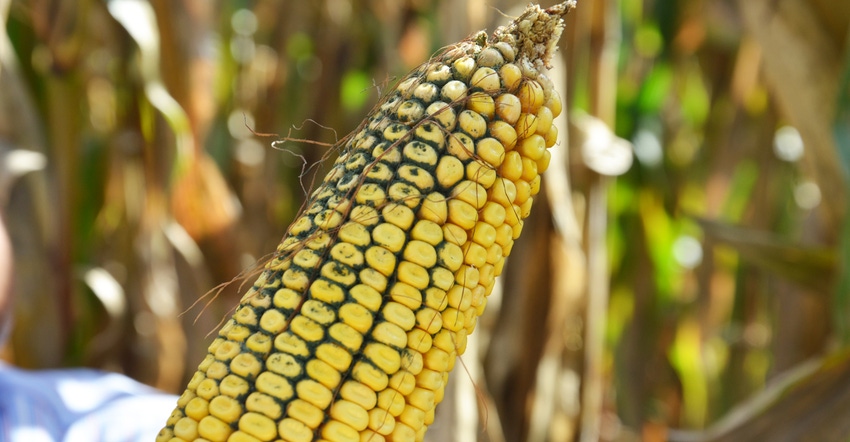
You could say many things about the 2018 growing season. It was a season of fits and starts. First it was extremely wet in April, then super-hot for spring in May, coupled with a dry spell followed by lots of rain, more heat, a normal to cool spell, and then more heat. While it doesn’t sound like a recipe for great corn yields, based on USDA projections and early yield reports, average corn yield could be the highest ever nationwide.
“Overall, it was a good growing season for corn,” says Dave Nanda, a former plant breeder who is now an independent crop consultant based in Indianapolis. “Once growers got in the field in very late April or early May, corn shot out of the ground and grew very fast.
“Most of Indiana’s corn crop pollinated in good shape, and there was ample rain for grain fill. It looked like there was potential for a record crop early in the growing season, and it appears as if the crop did its best to follow through.”
Nanda scouted the Corn Watch ’18 field regularly during the season. Corn Watch ’18 is sponsored by Seed Genetics-Direct, Washington Court House, Ohio.
Strange combinations
Gray leaf spot lesions were appearing on lower leaves in the Corn Watch ’18 field in late June. On the same day Nanda noticed them, he also saw a few plants with northern corn leaf blight lesions. What’s unusual is that gray leaf spot usually favors warm, moist conditions, where northern corn leaf blight likes it cooler.
The field was sprayed with fungicide. Diseases developed later, but the fungicide held them in check on upper leaves until very late in the season. Before the season ended, you could find lesions of both diseases on the same leaf in several cases.
Nanda also noticed an ear here and there with what appeared to be fusarium or gibberella ear rot before harvest. That isn’t surprising; ear rot often appears on a few ears every year, he says. But when husks were pulled back on one ear and the greenish mold characteristic of aspergillus appeared, that was a surprise! It typically appears when it’s hot and dry. Aspergillus can produce aflatoxin.
Although molds of any type were few and far between and overall grain quality was good, the fact that molds favored by different conditions showed up in the same field in the same year is interesting, Nanda says.
Perhaps most interesting of all is that Indianapolis recorded more than twice the normal number of days with temperatures of 90 degrees F or higher. That qualifies as a hot summer and is certainly not a recipe for high yields.
Yet lots of corn is out there, Nanda says. Yield monitors tell a story of high yields. Watch for yield results from the Corn Watch ’18 field coming soon.
About the Author(s)
You May Also Like




